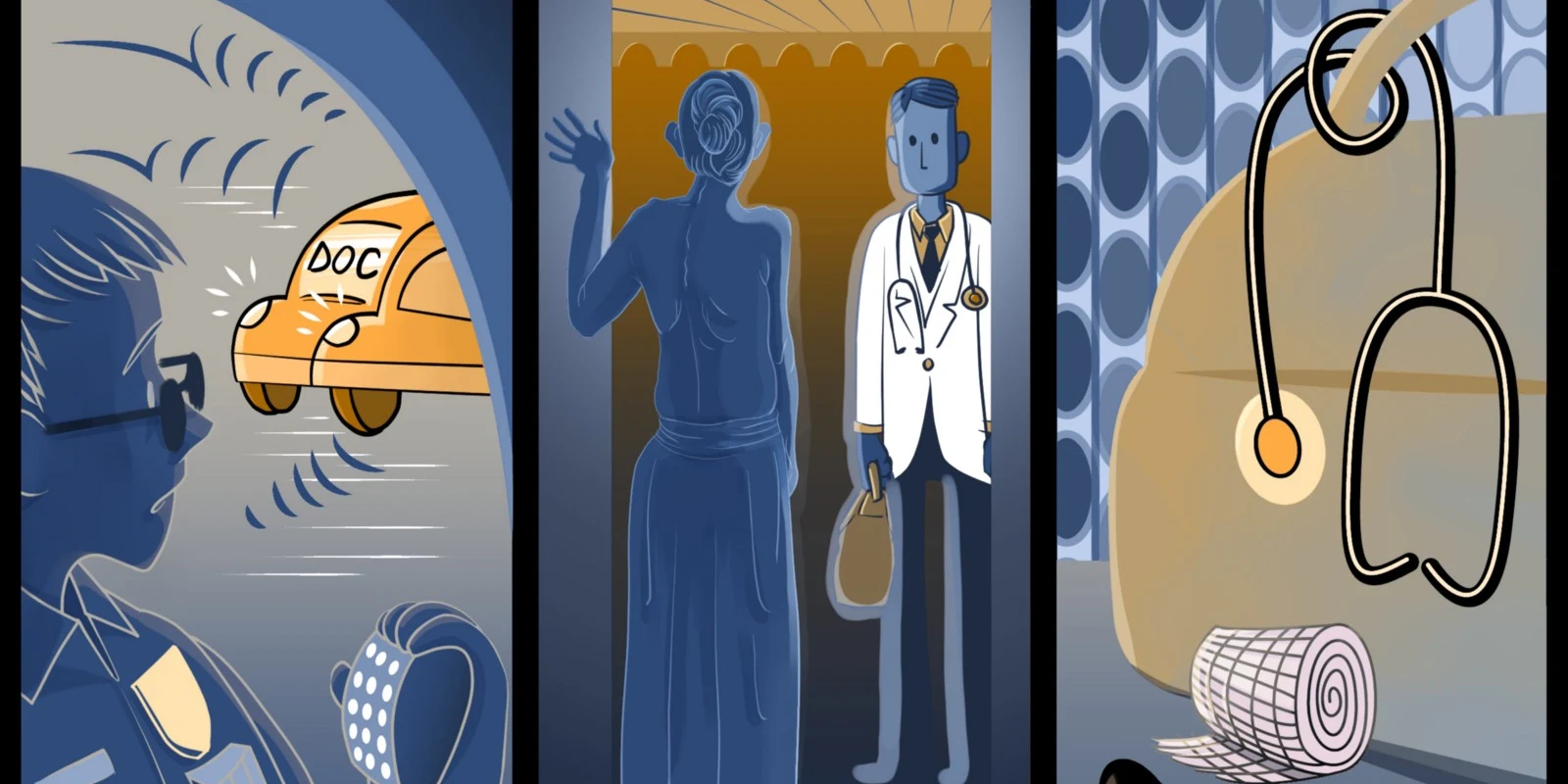
Clueless at the time, when I applied to medical school I imagined myself one day making house calls, good ol’ Doc Schwab, paid in chickens and pies, smiles and blackberry jam. There I’d be, delivering babies on kitchen tables, patchin’ up Old Lady Jones’s leg on the sofa, shaking out thermometers and feeling foreheads. One of my roommates in med school was the son of such a doctor, although instead of clopping around with a horse and buggy, he raced across the back roads of Kentucky in an Aston Martin DB4, before James Bond ever saw one. State cops would look the other way: “Aincha gonna stop ‘im Jess?” “Hail no, that thar’s Doc Munger, heading t’ th’ McCoy homestead, I reckin’…”
I liked the whole idea of it.
Early in my surgery practice, when I had extra time on my hands, and to some degree throughout my entire career, I actually made house calls. As time became more precious, I had to be realistic: not too far out of the way, people with a simple problem for whom a trip to my office was especially difficult. But as a youngster, there were occasions when I went quite out of the way, and spent a lot of time.
For example: I’ve always had mixed feelings about “The Phone Call.” A woman is awaiting the news of a breast biopsy; I call her and note the stoppage of breath at the other end of the conversation. To say she should come in for the results is to let her know but provide no support. To give the news over the phone feels cold and impersonal. So I’d split the difference by breaking the news as gently as I could, and inviting her in for an immediate consultation. But sometimes, early on, I reversed the equation and said, “How about if I come over and we can talk about it?” (In my later years I would, in fact, give the news over the phone, but always along with making time for a same-day office visit, and saying we’d talk about how we’re going to take care of it.)
One time, in my pre-gray-hair days, after I’d spent at least an hour at their home, my patient and her husband gushed their appreciation for the visit and my care to that point, but announced they’d be going to Seattle for treatment. Probably thought I looked too young. Gray hair: a welcome advantage for ripening doctors.
Most of the time, my house calls were to a post-op patient, usually older, having a hard time getting around: check a wound, a little debridement, change a bandage, remove or unclog a drain. I’d load up with a few tools, some tape and gauze and ointments, stuffed into my classic doctor bag (a med-school graduation gift from my grandmother). Walking to the door, I’d wonder what the neighbors thought, figuring they’d be jealous; their neighbor had a heck of a doctor there. Always the visit was greatly appreciated, and generally met with amazement. Sometimes it was my own: finding out how my patients lived, in a trailer, in an unkempt crumbling home, in a fancy joint with all the options. And I’d learn about how they were able, or not, to carry out the post-op instructions I’d given them. Which led to a much more practical and pragmatic approach to what I’d tell people about after-care at home.
Once, I got a call from a feisty old lady for whom I’d recently done a mastectomy: she was worried about her wound, or a drain, or something. To her obvious delight I’d said, “Well heck, I’m almost done here, how ‘bout I swing by your place and have a look?” She answered the door stark naked from the waist up, her unoperated side of the voluminous variety; responding to my surprise she said, “Hell, I figured you’d want to see it anyway, so why get dressed?” Her home was right on a main street. No screeching tires, far as I recall.
Making house calls always made me feel good, and the benefits were invariably mutual. In my medical school, each first-year student was matched with a family in which the wife was pregnant. We followed her through pregnancy and delivery and were involved in the care of the baby. At least one home visit was a requirement, and we met in groups afterward to discuss what we’d found. The real import was in learning how patients’ illnesses are part of an entire life and not just the little slice of the day during which we see them.
All doctors — and most especially surgeons, who typically send people home significantly altered (if only, hopefully, for a short while) — would be amazed by and learn from seeing patients in their homes. It is, of course, completely impractical and nearly impossible nowadays, time and compensation (and liability?) being among the reasons why it rarely happens. Not to mention the risk of seeing an old lady naked at her front door.
Sidney Schwab is a semi-retired general surgeon who blogs at surgeonsblog.blogspot.com and writes a weekly column in a local newspaper.






